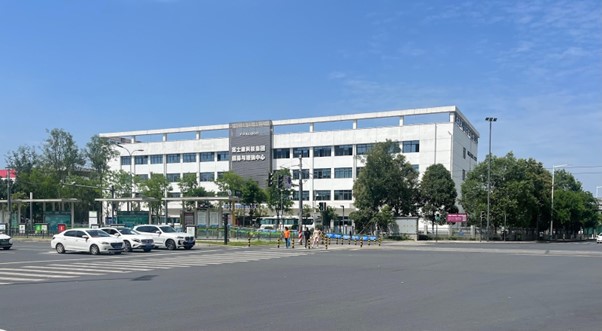Worker Empowerment (WE) has concern for the minimum wage adjustment policy in China and conducted an investigation into wages and workers’ expenses in Guangdong Province. These surveys repeatedly show that the minimum wage policy is influential in adjusting workers’ basic wage, and is of vital importance to ensuring the grassroots workers’ livelihood.
In April 2017, we noticed that Guangdong province plans to freeze the minimum wage for three consecutive years. After a few months, a total of 22 districts announced an increase in the minimum wage in 2017. Today, the minimum wage in Shenzhen, Shanghai, Beijing, Tianjin and Zhejiang provinces has exceeded 2,000 yuan, leading wage growth in the whole country.
The minimum wage in Guangdong Province however, not only failed to adjust for three years, the highest minimum wage in Guangzhou City is less than 2,000 yuan. WE are deeply concerned about the impact of Guangdong’s freezing minimum wage on workers’ livelihoods in the area. What is the actual living expense of Guangdong workers for these years? How do they deal with basic life necessities and other needs of life? How should the Guangdong provincial government amend the minimum wage to protect workers and their families?
From September to November 2017, WE selected samples from four tier cities in Guangdong Province: Guangzhou in the first tier city ( whose current minimum wage is 1,895 yuan), Dongguan in the second tier city (whose current minimum wage is 1,510 yuan) , Huizhou in the third tier city (whose currently the minimum wage of 1,350 yuan), and Heyuan City in the fourth tier city (whose current minimum wage of 1,210 yuan).
WE conducted survey on workers’ monthly wages, overtime hours, personal living expenses, social security contributions and family burdens. A total of 78 valid questionnaires were gathered, including 16 female and 62 male workers. We also invited three different types of workers in Guangzhou and Dongguan to conduct a detailed expenditure record in October 2017. In addition, from October to November 2017, we conducted market price survey in different shopping malls in Guangzhou and Dongguan respectively to know the price of daily necessities for workers. In the end, the results of the questionnaire are used to analyze and evaluate the different wage and actual life expenditure of workers in different cities in Guangdong Province. The workers’ records of their monthly expenditure are mainly used to show how workers consumed in their actual needs. The market price statistics are used to estimate the worker’s consumption needs and real expenses.
After gathering data on workers’ wages and expenses in four tier cities in Guangdong province, WE found these main findings:
(1) In general, workers’ wage in this survey is clearly at a low level compared with the overall social level.
If we only consider the basic wage, that is, without overtime and without additional subsidies, most workers will only earn a monthly wage less than 40% of the local average social wage. Only by including other details such as overtime and subsidies workers’ wage rises to 60% of the average social wage.
From this survey, most workers could earn between 3,000 yuan and 4,000 yuan per month, yet their basic wage is quite low. More than 60% of workers earn a basic wage of less than 2,000 yuan. Though this workers’ basic wage met the local minimum wage requirement, it is not much higher. WE surveyed workers from various industries and sectors, yet such difference has little effect on workers’ basic wage. This shows that employers still pay workers according to the minimum wage, hence the phenomenon that “minimum wage is almost workers’ highest basic wage” still prevails.
(2) Workers’ expenses are severely imbalanced: workers get used to low consumption and burden high cost for development.
We found that most workers’ daily life are quite economized on food clothing and personal expenses. They maintain a very limited cost on such life necessities. When we count workers’ life subsistence cost (food, shelter, clothing, water), workers average expenditure is 1015 yuan per month. When other costs are all included, the average monthly expenditure becomes as high as 3,073 yuan.
Among their cost, food accounts for a large share of workers’ daily expenses. Secondly housing, which is often cheap and poorly maintained, therefore workers sacrifice living standards to reduce costs. In addition workers seldom buy clothes, they also strictly control their daily grocery and leisure or entertainment expenses. Many workers spend 0 yuan on transportation (except one return train ticket for hometown every year), so that they go by walk instead of by public traffic. Most workers in this survey also have no budget for skill training or continued education, nor do they have such opportunity.
Although on the one hand, workers’ wages exceeded the basic survival cost, they are accustomed to consuming at low expenditures to meet such subsistence requirement and therefore workers are living at lower quality of life than standard. On the other hand, workers have invested more than double their living expenses in meeting development needs, particularly health care and family financial support. Therefore, it can be seen that workers with low incomes are still sacrificing personal quality of life to meet family development needs, hence they must try hard to catch up with social development.
(3) There is a clear regional difference in worker’s wage income, but there is not much difference in workers’ daily expenditure in different cities.
Statistics show that workers who work in higher tier cities gain a relatively higher wage and better social security benefits, while workers in lower tier cities received the lowest average income and the worst social security benefits. The consumption gap among the four cities’ workers however, is quite little. Most workers save their food, clothing and living expenditures, and generously spend much money on their children and parents. Averagely speaking, workers in four cities support their families with above 1,000 yuan a month, some are even reaching 2,000 yuan per month, like workers from Huizhou city.
There are few workers living together with their families in urban cities, yet the cost of urban living is quite high. According to workers’ consumption records, workers who live with their families in the city spend at least 3,000 yuan a month, and most of their expenses are for the whole family.
The difference in expenses between cities can also aggravate the burden on workers. For example, we can see from the market price statistics, that there is very little gap on the necessary life expenditures in Guangzhou and Dongguan. The investigation of workers’ daily necessities in four cities also displayed that the average expenditure on each item was mostly within one hundred yuan difference in the four cities. It can be argued that the market prices and living standards in different cities in Guangdong Province are slightly different, but the difference is not big at all.
(4) Social Security failed to ease the burden of workers, and there are gaps among workers on their savings.
Social security in the four cities do not fully cover all workers. In addition, inadequate social security means that workers have little money to support others in the family. From the workers’ daily expenses, we can see that in China the social security model is still family comes first but not the society. Chinese people used to bring up children for the purpose of being looked after in old age. And family is the place of self-help and retirement in later life. All working members of the family would come out to make money and spend their income and savings for their family members like children and parents.
Workers’ saving amount is also related to their different ages and consumption habits. This survey shows an age gap among workers in the four tier cities (due to our selected sample). For example, the workers in Huizhou are generally older than 40 years old, while the workers in Heyuan are younger with an average age under 30. Therefore, Huizhou workers displayed the highest cost of health care and highest financial support for family among four cities, and Huizhou workers also possess the highest proportion of savings. On the contrary, young workers in Heyuan are spending more on entertainment, while contributions for families and savings are the lowest in the four cities. In all cities, once workers encounter diseases or accidents, the burden of a sudden expenditure will be extremely heavy for workers owing to inadequate social security protection.
In view of this, we make the following suggestions on the adjustment of the minimum wage:
(1) We suggest the minimum wage should meet the living expenses of family expenses.
We calculate the monthly minimum wage needed for workers, with example of a three-person family living in the industrial area of Guangdong Province. Our calculation is based on the market price, workers’ consumption habits and actual needs. Our suggestion is a family of three in Guangzhou city should have a monthly income of at least 7,510 yuan (with 2 at work, the minimum wage per person should reach 3,755 yuan); a 3-person family living in Dongguan city should have a monthly income of 6,877 yuan (with 2 at work, then each person’s minimum wage should reach 3,439 yuan).
(2) The minimum wage standard should reach the bottom line of 40% of average social wage.
At present, the actual minimum wage in Guangdong Province is far away from the actual needs of workers. It is losing the guiding significance to workers’ wage than that in the past. We argue that the minimum wage for Guangdong workers must be set back on track as soon as possible and the bottom line should be 40% of the average social wage. Guangdong government should recognize that lower-income workers shall share the fruits of economic development in recent years. Although there are regional differences, the 40% of average social wage should still be the lowest standard for workers’ minimum wage. This standard actually coincided with workers’ basic wage in four tier cities in our survey. Therefore, we propose that the minimum wage in Guangdong in 2018 should at least meet the following criteria: 2,970 yuan in Guangzhou city; 1,922 yuan in Dongguan city; 2,159 yuan in Huizhou city; and 1,884 yuan in Heyuan city.
(3) The minimum wage standard needs to be 60% of average social wage in order to meet workers’ development needs.
In addition, our findings also show that workers are spending more and more on development needs. If 40% of the average social wage can not meet the real development needs of workers, we suggest that the minimum wage should eventually be in line with 60% of the average social wage. This should make up for workers’ development expenditures in the event that social security is not fully covering workers.
Read the full report by WE (in Chinese only): “Workers’ wage and Living Expenses in Guangdong Province“









